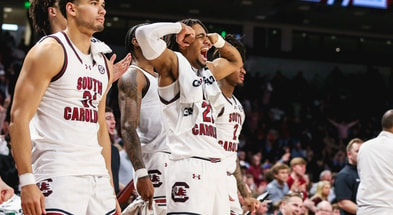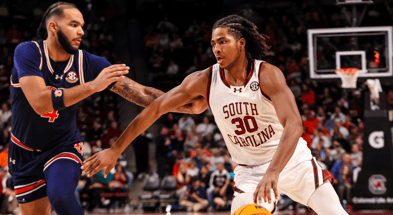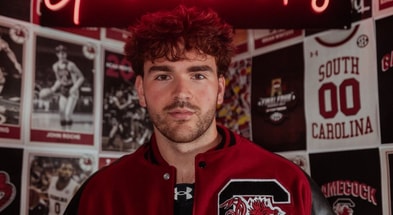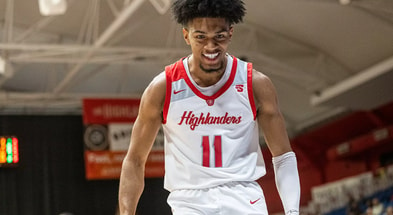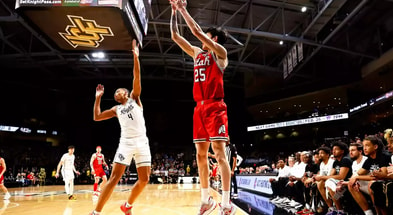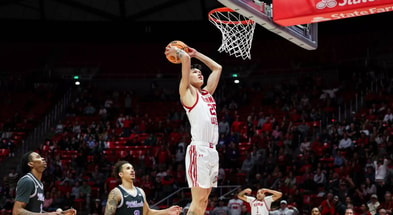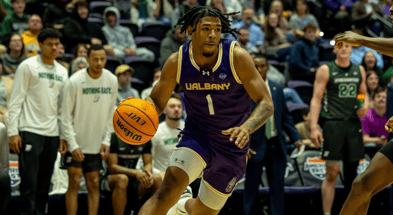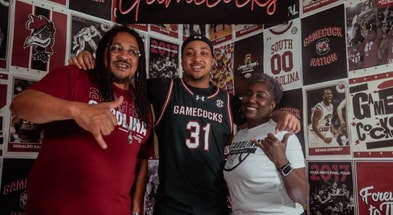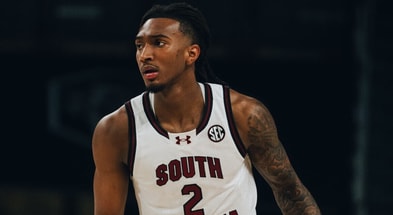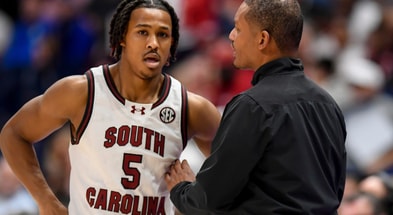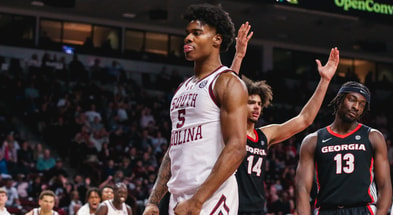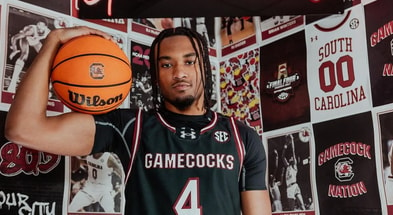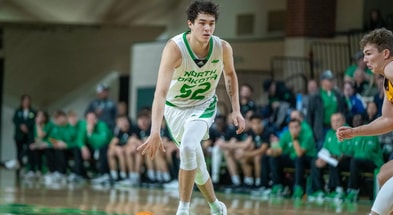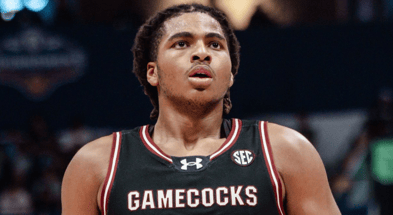A Gamecock Odyssey
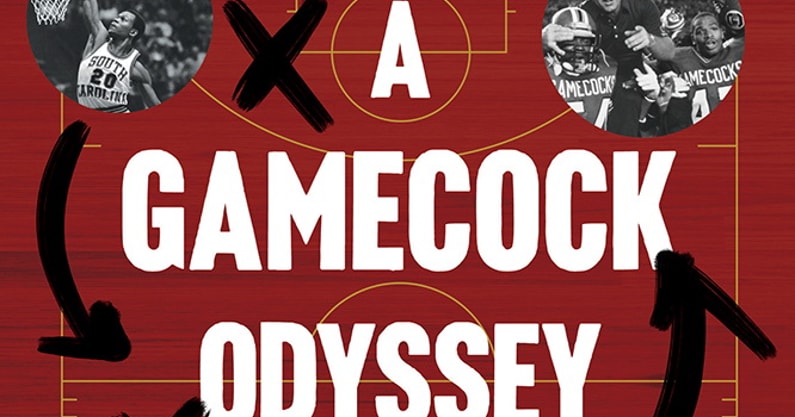
A Gamecock Odyssey, GamecockCentral member Alan Piercy’s new book recalling USC’s years between membership in the ACC and SEC (1971-1991), has officially been released from USC Press. The following is an excerpt from the book’s introduction.
(Excerpted with permission from A Gamecock Odyssey: University of South Carolina Sports in the Independent Era by Alan Piercy. Published by University of South Carolina Press and copyright University of South Carolina.)
“What a good thing it is to go to games. What strange joy is felt as you leave the flatness of your daily life, the fatigue of routine, and the killing sameness of jobs to move among thousands toward a brightly lit field house at night.” – Pat Conroy, My Losing Season
I was a sports-obsessed boy. A child of the late 1970s and early 80s, I had the immeasurable good fortune of growing up in a university town with a father who was inclined to take me to games. Had we lived in Charlottesville, or Madison or Austin, I no doubt would have developed devotion in equal measure to the Cavaliers, the Badgers, or the Longhorns. Because we lived in Columbia, my obsession was the Gamecocks. My childhood was garnet-tinged, and I marked the seasons by whether we were sitting in Williams-Brice Stadium, or Frank McGuire Arena, or Sarge Frye Field.
My timing was excellent, though I regret missing the dash and roar of Frank McGuire’s teams, those Gotham-bred, fever-dream phantasms who haunted Tobacco Road boys in the late ’60s and early ’70s. The first memories I have of attending games at Carolina are from the 1980-81 academic year, when I was eight, turning nine. George Rogers won the Heisman Trophy, Zam Fredrick won the national scoring title, and Gamecock baseball went to the College World Series.
Are you kidding me? I was unavoidably, irretrievably hooked.
On those much-anticipated winter nights when there was a home basketball game, Dad would park somewhere along Main Street, south of the State House, beside the chili-scented air of Sandy’s Hotdogs, or the South Carolina bookstore, with its Gamecock-emblazoned facade. We would walk past the law school, down to the florescent-lit pedestrian tunnel that runs under Assembly Street, coming out at the north side of the Carolina Coliseum – the House that Frank Built. The grand structure was bathed in light and elegant and revealed itself by degree as we approached the end of the tunnel. The air was brisk on our faces, our hands stuffed in pockets against the cold.
We walked through the glass doors, handing our tickets to the genial doormen in garnet blazers, and were enveloped by the warmth and buzz of the place. The alluring, buttered aroma of popcorn perfumed the air, and the spirited brass of the USC pep band washed over us as we stepped through the turnstiles to the notes of “Go Carolina” and “Step to The Rear.” The sound of sneakers squeaking on the old Tartan floor told us warm-ups were under way, and the retired jerseys of Roche and English and Joyce swayed from the massive rafters overhead as we walked through the double doors separating the concourse from the arena proper. The exquisitely-bearded Gene McKay’s rich baritone rang over the loudspeaker, welcoming us to Carolina Coliseum and Frank McGuire Arena. We often arrived early, just to soak in the mystique of the place before tipoff, and I imagined what it must have been like to witness those powerhouse McGuire teams of the late ’60s and early ’70s.
I hero-worshiped Rogers for his Heisman exploits and Fredrick for his high-flying dunks, but Jimmy Foster was the guy I wanted to be. The blue-collar hustler and battler, the whirling dervish of rebounds and trash buckets. Foster played with a wild abandon, once described by The State’s Bob Gillespie as “captain of the elbows-hustle-and-floor-burn brigade.” I modeled my own game after his, wearing black sweatbands positioned on my scrawny forearms just so, looking to take charges and scrap for loose balls like he did. Though my lack of talent and size led to more flailing about than points and rebounds, I strived to emulate #44, much as Protestant boys a decade earlier mimicked the great John Roche by performing the Catholic sign of the cross before free throws.
Foster was an undersized 6-foot-8 center as a freshman during the 1980-81 season under first-year coach Bill Foster (no relation) but moved to his natural position of power forward when seven-footer Mike Brittain arrived the following year. Foster’s career at South Carolina was a brilliant one, finishing as the third-leading scorer in program history behind John Roche and Alex English. He was (and still is) one of only two Gamecocks to reach both the 1,000-point and 1,000-rebound thresholds (English is the other). He led his team in rebounding all four seasons – the only Gamecock player ever to do so before Michael Carrera equaled the feat decades later. He led the team in scoring as a sophomore, junior, and senior, second only to national scoring champion Fredrick as a freshman. The superlatives go on.
Foster off the court was another matter. Jimmy was a hot mess.
He would tell you the same. He was affable and popular, and open to the illicit favors which often came to prominent players in the form of cash and free meals and comped hotel rooms at Myrtle Beach. And Jimmy was not bashful about milking it for all it was worth. It landed him and the program in hot water when he failed to return a borrowed coupe as agreed to a local Mercedes dealer. Legal troubles ensued. More about that later.
Jimmy played professional ball for a time in Australia but soon lost interest. Unable to return home due to an uncertain legal situation, he vanished, but not before revealing a number of violations within Bill Foster’s program, which led to an NCAA investigation and, ultimately, sanctions against Gamecock basketball.
Top 10
- 1New
Second-guessing Sark?
Ewers-Manning decision in spotlight
- 2Trending
Fiery crash video
Alijah Arenas football surfaces
- 3
Luke Altmyer
Calls out Nebraska QB commit
- 4Hot
Fan who fell from stands
20-year old former CFB player
- 5
Johntay Cook
Headed to ACC
Get the On3 Top 10 to your inbox every morning
By clicking "Subscribe to Newsletter", I agree to On3's Privacy Notice, Terms, and use of my personal information described therein.
Foster resurfaced in a 1997 phone call to The State’s Gillespie, wherein he professed a desire to return home, an eagerness to mend fences. His sincerity was compelling. He told of his wandering life since basketball. They were stories, as Gillespie put it then, worthy of a pulp fiction novel. Then just as quickly, Foster vanished again.
I thought of him from time to time over the years, wondering where he’d ended up, what had become of that whirling dervish. Given his prominence in the USC record book, his name is conspicuously absent from the school’s athletics hall of fame due in no small measure to the trouble he left behind. I often thought his exploits, both on the court and off, would make for compelling reading. Maybe a novel.
The more I thought of Jimmy’s story the more I wanted to write about it. But as I began to revisit his time at Carolina, I uncovered other stories, other forgotten but still-interesting tidbits, other dramatic characters, some seemingly pulled right out of a Greek tragedy. I soon realized that Foster was just part of a much larger story. The writing project expanded, eventually to include a period of two decades. It became a history of Gamecock athletics in the years between the ACC and the SEC (1971-1991).
But really, the story goes beyond that. It is about, among other things, a Southern college in the immediate post-desegregation years; the evolution of women’s sports from club-level competition to varsity status in the wake of Title IX legislation. It is a story about the rise and influence of television money, of conference realignment, of the early arms race of facilities and coaches’ salaries. In many ways, it is the story of two decades of collegiate athletics and societal change, as seen through the lens of the University of South Carolina. Beyond that, any history of the University of South Carolina is, by its very nature, a history of Columbia. The two are interwoven and inseparable.
But as much as all of those things, this book is a love letter to my school and to my hometown. It covers what was an often-difficult period in the history of Gamecock athletics – a period journalists and fans have often referred to as “the wilderness.” It is a lost era in some ways, bookended as it is between the incandescent rivalries that defined the Atlantic Coast Conference years and the lucrative stability of three decades in the Southeastern Conference since.
There is a sizeable segment of Gamecock fans who have no living memory of USC athletics outside of SEC membership. For them, this is a story of what came before and how we got to where we are. For those of us who lived through it, it’s a chance to settle into the cozy confines of Frank McGuire Arena and Sarge Frye Field once more and to revisit the magnificent characters and world-class athletes who wore garnet & black and the coaches who led them along that long wilderness road.
A Gamecock Odyssey is available now through USC Press, Columbia’s All Good Books, or wherever you buy books.


